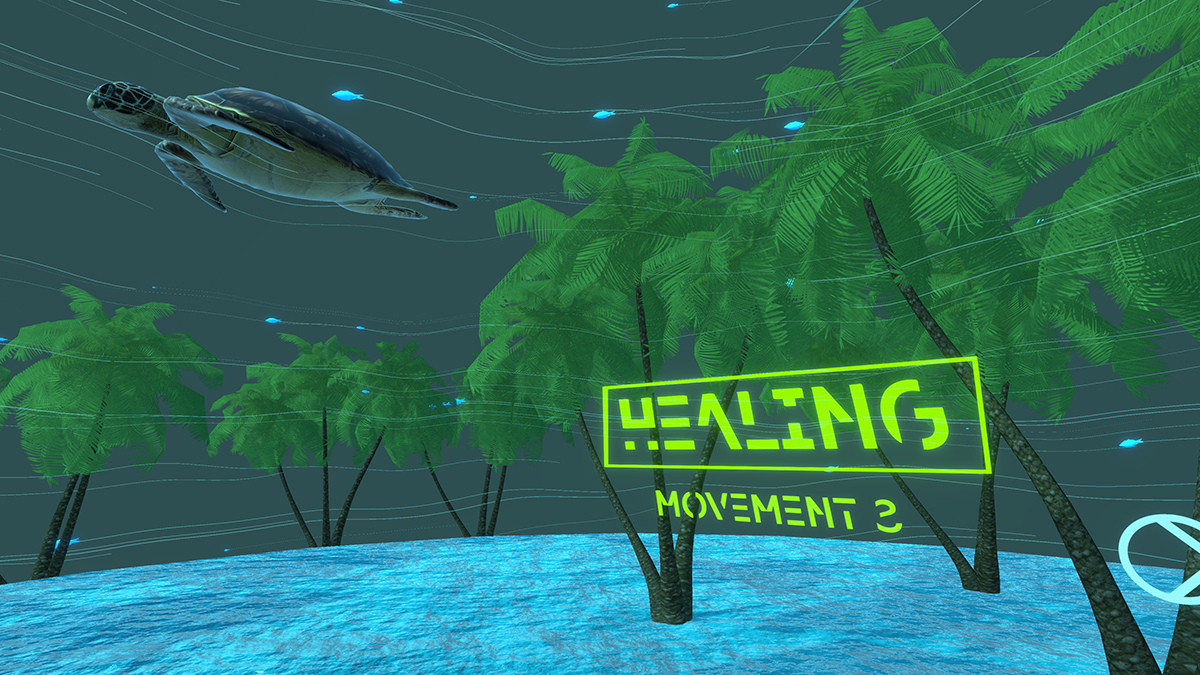The exhibit Unfolding Shrines examines accessibility in art through augmented reality.
The exhibition Unfolding Shrines presents an immersive Augmented Reality experience created by artists Jason Wilsher-Mills, Sophie Helf, Rebekah Ubuntu, and Uma Breakdown in partnership with Hot Knife Digital. Produced by London’s Shape Arts, which aims to create a more inclusive environment for disabled people to explore creativity, the digital exhibit reflects on the structures of society through innovative technology and the global experience of lockdowns. The exhibition can be viewed through a film with interpretation or audio book online or through the Unfolding Shrines app.
Jason Wilsher-Mills conceptualized the idea for Unfolding Shrines after winning the Adam Reynolds Award in 2020, an opportunity for mid-career disabled artists to further develop their practice. As lockdowns shut down social events and public spaces in the past year, many took to the digital realm for entertainment. Sharing and connecting instead took place on video formats. “In the past year, though going to galleries and exhibitions has scarcely been possible for anyone, disabled people who are ordinarily denied access to many cultural spaces have felt this exclusion more acutely than ever,” Eli Hayes, Communications and Program Officer at Shape Arts, told Mission. The closures brought the opportunity to cultivate an art and culture experience that can be inclusive to all.
Augmented Reality (AR) combines a real-life environment with computer-generated stimuli. With tools such as a headset, AR Goggles, and a screen, reality can be morphed into a 3D virtual experience. Retailers have leaned into this stimulation in the past year with digital “try-before-you-buy” features. Additionally, the popular picture-sending app, Snapchat, has immersed AR into its filter section. Through AR, everyday life merges into a dream-like state or video game. The possibilities for creation are endless. For disabled people, this can mean a new form of inclusivity to spaces without supportive features.

“Historically, the white-walled gallery environment has been exclusive and inaccessible, relegating disabled people and other marginalized audiences. Many galleries and institutions are not physically accessible, not to mention the myriad attitudinal and structural barriers that further prevent engagement. Through technological innovations such as augmented reality, artists and curators are afforded the agency to do away with these restrictive parameters altogether,” Hayes explained.
Without the restraints of the physical world, the disabled artists were able explore spaces with more freedom. While AR doesn’t provide turnkey accessibility across the board, the assistive technology can include features such as audio description and embedded captions to the experience. “The worlds of the show are spaces in which people who are usually disabled by society are not disabled,” remarked Hayes. “The challenge to traditional cultural spaces has been expanded this year as organizations and artists make the move to online presentation, for example.” By perceiving the gallery, the audience welcomes the question of conventions in everyday space and how we interact with them.
Augmented Reality provides a world of possibilities in the evolving conversation on accessibility. Unfolding Shrines encourages both the artists and audience members to encounter a new kind of reality–one where everyone can take part.
Image credit: Jason Wilsher-Mills, Rebekah Ubuntu




